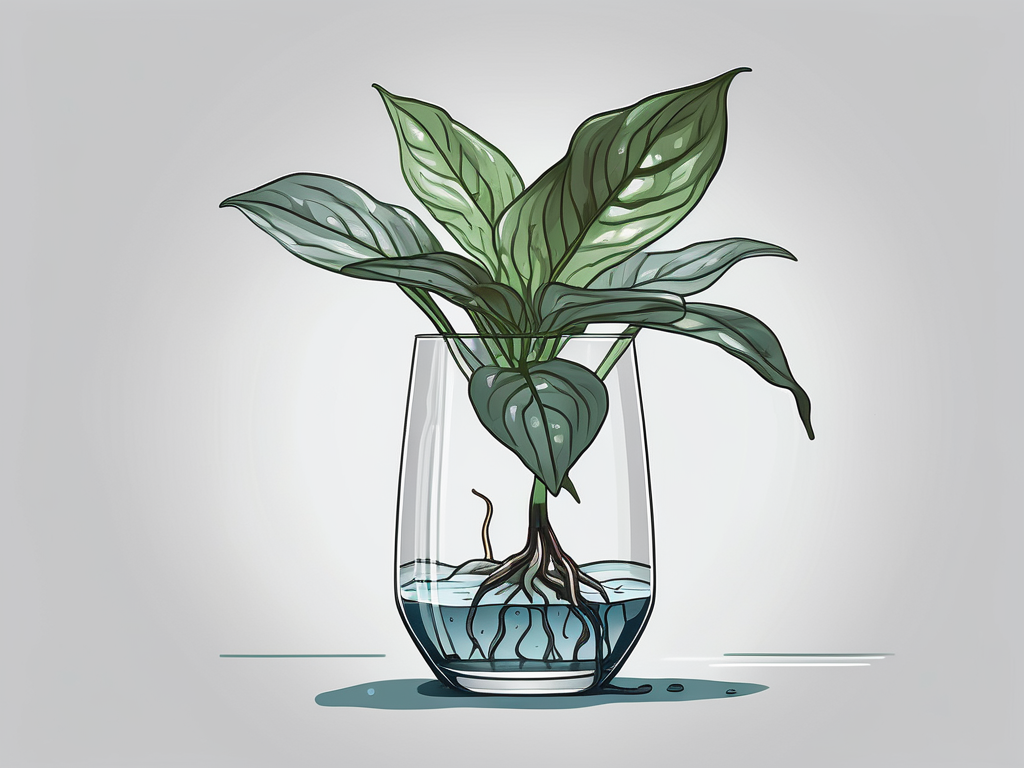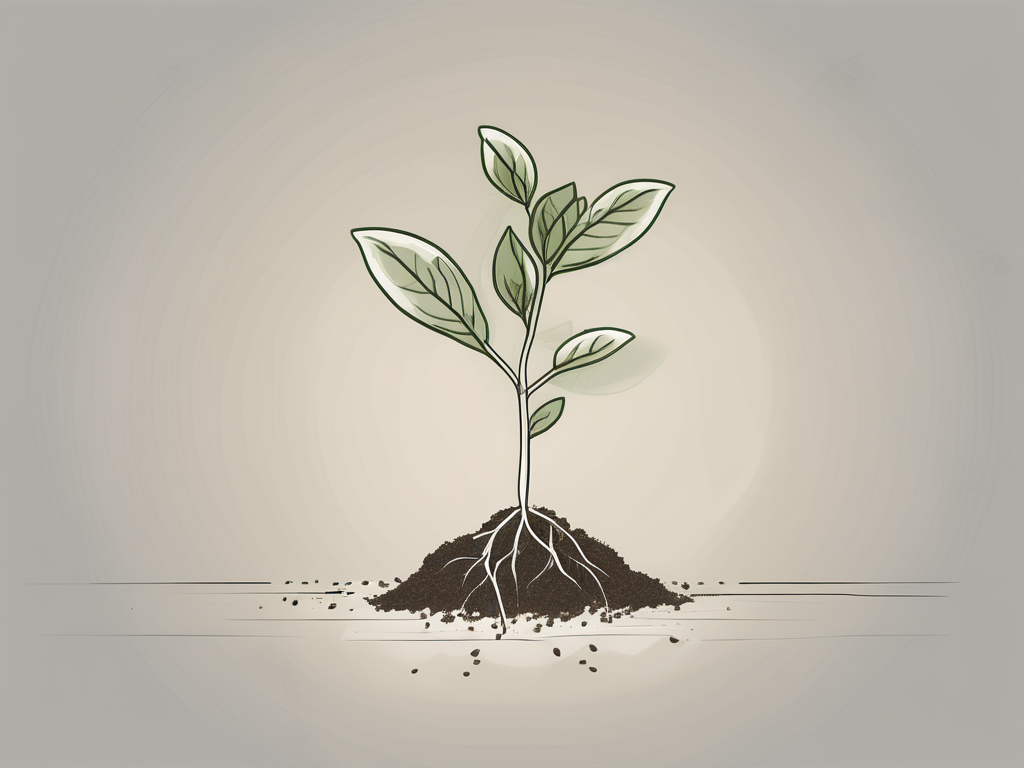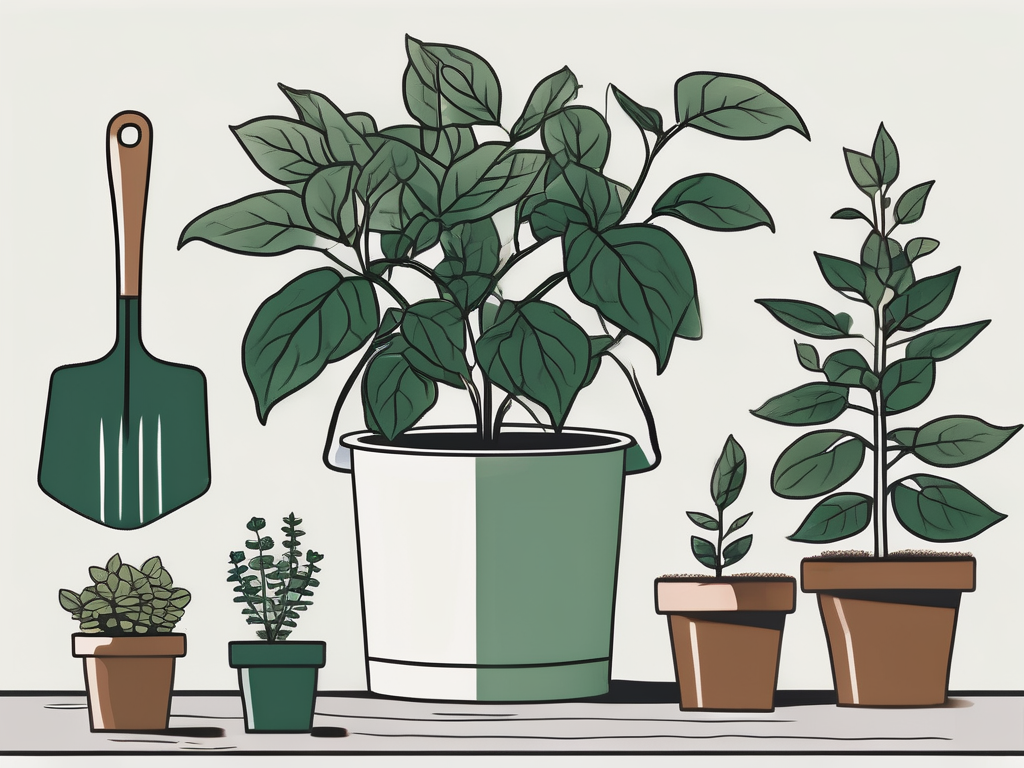
Aglaonema, also known as Chinese evergreen, is a popular houseplant loved for its beautiful foliage and low maintenance requirements. If you're a plant enthusiast looking to expand your collection or simply want to propagate your Aglaonema to share with others, water propagation is a simple and effective method that you can try. In this guide, we will walk you through everything you need to know about propagating Aglaonema in water, from understanding the plant to caring for your water-propagated cuttings.
Understanding Aglaonema: An Overview
Before we dive into the process of water propagation, let's take a closer look at Aglaonema itself. This tropical plant is native to Southeast Asia, where it thrives in the warm and humid conditions of its natural habitat. Aglaonema is renowned for its vibrant and variegated leaves, which come in a variety of colors, including shades of green, pink, and silver.
Aside from its aesthetic appeal, Aglaonema is also known for its ability to purify the air by removing toxins and pollutants. This makes it an excellent choice for indoor spaces, as it not only adds beauty but also contributes to a healthier living environment.
The Origin and Characteristics of Aglaonema
Aglaonema belongs to the Araceae family and is native to the rainforests of Southeast Asia, including countries like Thailand, Malaysia, and the Philippines. It is a herbaceous perennial that typically grows up to two feet tall, with broad leaves that showcase unique patterns and colors.
One of the reasons why Aglaonema thrives as a houseplant is its adaptability to various light conditions. While it prefers bright, indirect light, it can tolerate lower light levels as well. This makes it suitable for different areas of your home, from well-lit living rooms to dimmer corners.
Why Choose Water Propagation for Aglaonema?
If you've ever propagated plants before, you might be familiar with methods like stem cuttings and division. So, why should you choose water propagation for your Aglaonema? Well, there are a few reasons:
- Water propagation is straightforward and beginner-friendly. It doesn't require specialized equipment or advanced gardening skills, making it accessible to anyone who wants to give it a try.
- It allows you to observe the roots' development and growth, making it an exciting process to witness. Plus, you can easily change the water if needed to maintain a clean environment for the cuttings.
- Water propagation often results in faster root development compared to other methods, which means you can enjoy a new plant sooner.
Preparing for Aglaonema Water Propagation
Now that you have a good understanding of Aglaonema and why water propagation is a great choice, let's move on to the preparations you need to make before getting started.
Choosing the Right Aglaonema Plant
When selecting a plant for water propagation, it's essential to choose a healthy Aglaonema specimen. Look for a plant with vibrant leaves, free from any signs of pests or diseases. Ideally, select a stem that has at least two nodes, as these are where the roots will emerge.
If you already have an Aglaonema plant and want to propagate it, you can simply trim a healthy stem to use as a cutting. Remember to use clean and sharp pruning shears to make a clean cut, as this will promote better healing and root development.
Gathering Necessary Tools and Materials
Before starting the water propagation process, gather the following items:
- A clear glass or jar that is large enough to accommodate the cutting, with room for roots to grow. Clear containers are ideal as they allow you to monitor root development without disturbing the plant.
- Purified water or tap water that has been left out overnight to allow any chlorine to dissipate. Avoid using water that contains high levels of fluoride or other chemicals, as these can hinder root growth.
- Rooting hormone powder (optional). While not necessary, using a rooting hormone can encourage faster root growth and increase the chances of success. Make sure to follow the instructions and guidelines provided with the specific product.
Step-by-Step Guide to Aglaonema Water Propagation
Now that you have everything you need let's dive into the step-by-step process of propagating Aglaonema in water.
Cutting the Aglaonema Stem
Start by taking a stem cutting from your chosen Aglaonema plant. Using your sharp pruning shears, make a clean cut just below a node. Nodes are the small bumps or joints along the stem, and they are where new roots will emerge. Aim to cut a stem that is around four to six inches long, as this will provide enough surface area for root development.
Remove any leaves from the lower portion of the cutting, leaving only a few at the top. This helps prevent the leaves from rotting or being submerged in water, which can lead to fungal issues. However, make sure to retain a few leaves at the top to allow the cutting to continue photosynthesizing.
Setting Up the Water Environment
Take your selected jar or glass and fill it with purified water or tap water that has been left out overnight. If you're using a rooting hormone powder, dip the cut end of the Aglaonema stem into the powder and gently tap off any excess before placing it in the water. The rooting hormone will help stimulate root growth and increase the chances of successful propagation.
Place the glass or jar in a location that receives bright, indirect light. Avoid placing it in direct sunlight, as this can cause excessive heat and potentially harm the cutting. Remember to remove any leaves that would be submerged in water, as this can lead to rotting and hinder the propagation process.
Monitoring the Root Growth
Over the next few weeks, keep a close eye on your Aglaonema cutting and monitor the progress of root growth. You should start seeing small white roots emerging from the cut end of the stem after a couple of weeks. This indicates that the cutting has successfully rooted.
During this time, it's crucial to change the water regularly to prevent the growth of algae or the accumulation of any harmful bacteria. Every few days, empty the old water and replace it with fresh, clean water. Rinse the glass or jar thoroughly to remove any residue or buildup.
Remember to maintain a stable water level, ensuring that the roots are always submerged but not excessively so. If the water level drops too low, it can inhibit root growth and affect the overall health of the cutting.
Caring for Your Water-Propagated Aglaonema
Once your Aglaonema cutting has developed sufficient roots, it's time to transition it to a more permanent planting medium or consider keeping it in water long-term.
Changing the Water Regularly
If you decide to keep your Aglaonema in water, it's important to change the water regularly to maintain a clean and healthy environment. Every week or two, pour out the old water and replace it with fresh water. This helps prevent the buildup of any harmful substances and ensures the roots have access to the oxygen they need to thrive.
When changing the water, take the opportunity to inspect the roots for any signs of rot or discoloration. If you notice any problems, trim away the affected roots with clean scissors or pruning shears before placing the plant back into fresh water.
Providing Adequate Light and Temperature
Aglaonema is a tropical plant, so it thrives in warm and humid conditions. Place your water-propagated Aglaonema in a location that receives bright, indirect light. A north or east-facing window is usually a good choice, as it provides the ideal balance between light intensity and duration.
Avoid exposing the plant to direct sunlight, as this can scorch the leaves and cause them to fade or become discolored. Additionally, ensure that the room temperature remains between 65°F and 75°F (18°C to 24°C), as temperatures outside of this range can stress the plant and hinder its growth.
Transitioning to Soil (If Desired)
If you prefer to transition your water-propagated Aglaonema to soil, it's best to do so after the roots have developed and grown to a sufficient length. Carefully transplant the cutting into a well-draining potting mix specifically formulated for indoor plants. Ensure that the soil remains consistently moist but not overly saturated.
Keep in mind that transitioning the plant from water to soil can be a shock to its system, so it's important to monitor it closely during this period. Providing a stable and nurturing environment will help the plant adjust and continue its growth successfully.
Troubleshooting Common Issues in Aglaonema Water Propagation
While water propagation is generally a straightforward method, some common issues may arise. Here are a few troubleshooting tips:
Dealing with Root Rot
If you notice that the roots are turning brown, mushy, or emitting a foul odor, it's likely that your cutting has experienced root rot. This is usually caused by excessive moisture or poor ventilation. To address this issue, remove the plant from the water, carefully trim away the affected roots, and transfer it to fresh water. Ensure that the roots are not submerged in water to prevent further rotting.
Addressing Slow or No Root Growth
If your Aglaonema cutting has been in water for several weeks but you don't see any signs of root growth, it could be due to various factors, such as low temperature or poor water quality. Try relocating the cutting to a warmer area and changing the water with fresh, clean water. You can also try using a rooting hormone to stimulate root development.
Managing Leaf Yellowing or Dropping
Leaf yellowing or dropping can occur during the water propagation process. This is usually a sign of stress, which can be caused by overexposure to direct sunlight, cold drafts, or improper watering. Ensure that your Aglaonema cutting is in a suitable location with the right lighting conditions and temperatures. Additionally, make sure the water level is adequate and change it regularly to prevent any buildup of harmful substances.
With proper care and attention, your water-propagated Aglaonema will continue to grow and flourish, rewarding you with its vibrant foliage and beauty. So why not give water propagation a try and expand your collection of these marvelous plants? Happy propagating!












